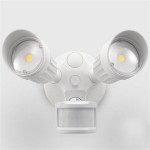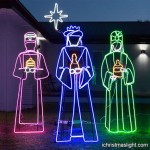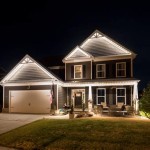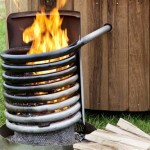Outdoor Lamp Post Won't Turn On: Troubleshooting and Solutions
An outdoor lamp post enhances curb appeal, provides safety and security, and extends the usability of outdoor spaces into the evening hours. When an outdoor lamp post fails to illuminate, it can negate these benefits, creating a potential hazard and diminishing the aesthetic value of a property. Identifying the cause of the problem and implementing the appropriate solution is essential for restoring the functionality of the lamp post.
Troubleshooting a non-functional outdoor lamp post requires a systematic approach, starting with the simplest and most common issues and progressing to more complex diagnostic procedures. A methodical assessment will help pinpoint the source of the problem efficiently, minimizing unnecessary repairs or replacements.
Checking the Power Source and Basic Connections
The first step in troubleshooting a non-functional lamp post involves verifying the power supply. This begins with the circuit breaker controlling the outdoor lighting circuit. A tripped breaker indicates an overload or short circuit in the system. Resetting the breaker might restore power, but if it trips again immediately, it signifies a persistent electrical problem that requires further investigation.
Beyond the breaker, the outdoor outlet controlling the lamp post needs careful verification. If the lamp post is plugged into an outdoor receptacle, use a voltage tester to ensure that the outlet is receiving power. A faulty outdoor outlet can be caused by corrosion, loose wiring, or a defective ground-fault circuit interrupter (GFCI) outlet. If the outlet is not functioning, it may need to be replaced or repaired by a qualified electrician.
The lamp post's power cord must be thoroughly inspected for any signs of damage, such as cuts, fraying, or exposed wires. A damaged power cord can create a short circuit or pose a significant safety hazard. If any damage is detected, the power cord must be replaced immediately.
If the lamp post is hardwired, the electrical box where the wiring connects to the lamp post should be examined. Ensure that all wire connections are secure and properly insulated. Loose connections can prevent the flow of electricity and cause the lamp to malfunction. Use wire connectors to secure the connections and electrical tape to insulate any exposed wires.
Additionally, consider the possibility of a timer or photocell controlling the lamp post's operation. Ensure that the timer is properly programmed and that the photocell is not obstructed by any objects, such as leaves or branches, that might prevent it from sensing darkness. A malfunctioning timer or photocell can prevent the lamp post from turning on even if all other components are functioning correctly.
Examining the Bulb and Lamp Components
A burned-out bulb is the most common cause of a non-functional lamp post. Even if the bulb appears intact, the filament might be broken. Replacing the bulb with a new one of the correct wattage is a simple and inexpensive way to rule out this possibility. When choosing a replacement bulb, consider energy-efficient options such as LED bulbs, which offer a longer lifespan and lower energy consumption compared to traditional incandescent bulbs.
If replacing the bulb does not solve the problem, examine the lamp holder or socket. Over time, the contacts inside the socket can become corroded or loose, preventing the bulb from making a proper connection. Clean the contacts using a wire brush or sandpaper to remove any corrosion. If the contacts are damaged or loose, the lamp holder or socket might need to be replaced entirely.
In some cases, the ballast or transformer, if present in the lamp post design, might be the culprit. Ballasts and transformers regulate the voltage and current supplied to the bulb. A failed ballast or transformer can prevent the bulb from lighting up. These components typically require replacement by a qualified electrician, as they involve working with higher voltages.
For lamp posts equipped with motion sensors, the sensor’s functionality should be checked. A malfunctioning motion sensor might prevent the lamp from turning on, even when motion is detected. Check the sensor’s settings and ensure that it is not set to a daytime-only mode. If the sensor is defective, it might need to be replaced.
The condition of the lens or globe surrounding the bulb should also be considered. A cracked or damaged lens can allow moisture to enter the lamp post, potentially causing corrosion and damage to the electrical components. Replacing the lens or globe can help protect the lamp post from the elements and prolong its lifespan.
Investigating Wiring Issues and System Failures
If the previous steps have not resolved the issue, the problem might lie within the wiring itself. This requires a more thorough investigation of the electrical connections inside the lamp post and throughout the circuit. Inspect all wiring for signs of damage, such as cuts, fraying, or corrosion.
Use a multimeter to test the continuity of the wires to ensure that there are no breaks in the circuit. A break in the wiring can prevent the flow of electricity and cause the lamp to malfunction. If a break is detected, the damaged section of wire will need to be replaced.
Ground faults can also cause the lamp post to fail. A ground fault occurs when electrical current leaks from a live wire to a grounded metal part of the lamp post. This can trip the circuit breaker and prevent the lamp from turning on. Identifying and repairing a ground fault requires careful troubleshooting and should be performed by a qualified electrician.
Consider the possibility of pest damage to the wiring. Rodents and insects can chew through wires, causing short circuits or breaks in the circuit. Inspect the wiring for any signs of pest damage and take steps to prevent future infestations. This might involve sealing any entry points into the lamp post and using pest repellents.
In older lamp posts, corrosion can be a significant problem. Moisture and exposure to the elements can cause corrosion to form on the wiring, connections, and other metal components. This corrosion can impede the flow of electricity and cause the lamp to malfunction. Clean any corroded components using a wire brush or sandpaper and apply a corrosion inhibitor to help prevent future corrosion.
If the lamp post is part of a larger outdoor lighting system, the problem might lie in the system's central control unit or transformer. A failed control unit or transformer can affect the operation of all the lights in the system. Consult the system's documentation for troubleshooting procedures, or contact a qualified electrician for assistance.
Finally, it is important to ensure that the lamp post is properly grounded. A proper ground provides a safe path for electrical current in the event of a fault. If the lamp post is not properly grounded, it can increase the risk of electrical shock. Verify that the ground wire is securely connected to the lamp post and to the grounding electrode at the service panel.
When troubleshooting an outdoor lamp post, prioritizing safety is crucial. Always disconnect the power supply to the lamp post before performing any repairs or inspections. If uncertain about any aspect of the troubleshooting process, it is best to consult a qualified electrician to avoid potential hazards.

Starting A Gas Lamp Project Installation Design Gui

Garden Lamp Post Fresnel Oluce Contemporary Metal Led

Outdoor Soffit Lighting How To Do It Yourself

3w Led Underground Light Ip65 Buried Recessed Floor Outdoor Lamp Ac85 265v

C Cattleya 16 75in Matte Black Motion Sensor Outdoor Post Light Fixture Com

Porch Light Safety Leave It On Or Turn Off Safewise

Light Bulbs The Home Depot

How To Change An Outdoor Porch Lantern Sconce Light Bulb Simple Diy Do It Yourself Procedure Hq

How To Change An Outdoor Porch Lantern Sconce Light Bulb Simple Diy Do It Yourself Procedure Hq

Coramdeo Lighting
Related Posts







